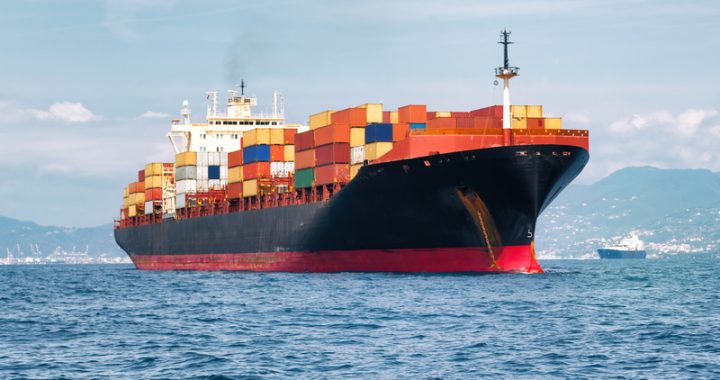Shipping & Protecting Your Cargo
The Importance of Using Shipping Container Desiccants
When shipping goods across long distances, maintaining their quality and safety during transit is crucial. A common but often overlooked problem is container rain, a phenomenon that can significantly damage the cargo inside. This occurs when moisture condenses inside the shipping container, leading to high humidity levels that can cause various issues, including rust and mould. In this blog, we’ll explore the factors that contribute to this problem and how using specialised desiccants can protect your goods, especially in environments where metals rust with exposure to just 45% relative humidity (RH).
The Problem with High Humidity in Shipping Containers

Shipping containers are often loaded with goods like timber, textiles, food, and electronics, which are highly susceptible to moisture damage. When the container is sealed and transported across seas, the temperature fluctuations can cause the air inside to cool down, leading to condensation on the container walls, ceiling, and even on the cargo itself. This trapped moisture is what we refer to as container rain.
The consequences of container rain can be severe:
- Rusting of Metals: Metals are particularly vulnerable to rust when exposed to environments with as low as 45% RH. Even a slight increase in moisture can initiate the oxidation process, corroding metal parts and compromising the integrity of the items.
- Damage to Textiles and Timber: For goods like textiles and timber, high humidity can lead to mould growth, staining, and a decrease in the quality of the products. Textiles can also absorb moisture, making them heavy and prone to mildew.
- Spoiling of Food and Electronics: Food items can spoil faster in high humidity, while electronic components can corrode, malfunction, or even become irreparably damaged.
To combat these issues, it is crucial to use effective moisture-absorbing solutions during shipping.
The Role of Desiccants in Shipping Containers
Silica gel bags have been a traditional choice for moisture absorption in shipping containers. However, in many cases, they might not be sufficient, especially during long sea voyages lasting 6 to 8 weeks. An alternative, more effective solution is to use Specialised Shipping Container Desiccants, which include products like calcium chloride.
Calcium chloride is a powerful desiccant that can absorb up to 10 times more moisture than silica gel. The key advantage of calcium chloride is its ability to lower the relative humidity inside the container more effectively. It can bring down the RH to around 55%, significantly reducing the risk of condensation and container rain.
Why Calcium Chloride is Superior for Shipping Containers
Calcium chloride is a salt, and its hygroscopic nature allows it to adsorb moisture efficiently. When it comes in contact with water vapour, it absorbs it and turns into a liquid brine. This process can be a concern, especially during long transits, as liquid brine could leak and damage the cargo.
To address this issue, R-tech supplies a product that combines calcium chloride with an absorbent polymer. This polymer helps to solidify the brine, preventing any potential leaks even if the desiccant bag is damaged during transit. This added safety measure ensures that the liquid brine will not discharge into the container, offering an extra layer of protection for your goods.
Using Desiccant Strips Effectively in Shipping Containers
For optimal moisture control, desiccant strips are used. These come in long strips of sachets, with each strip weighing 1 kilo and designed to hang on the wall of the container using hooks. Quick and easy to install and quick, easy and safe to remove. Alternatively, the strips can be draped directly over pallets using an adhesive pad, depending on the preference and layout of the cargo.
The number of strips required depends on the size of the container:
- 20ft Shipping Container: Requires approximately 6 strips.
- 40ft Shipping Container: Requires around 12 strips.
Each strip has the capacity to adsorb about 3 kilos of moisture during an average sea voyage of 6 to 8 weeks. This level of absorption can make a significant difference in maintaining the relative humidity within safe limits, effectively reducing the RH to about 55%.
Best Practices for Using Shipping Container Desiccants

To ensure maximum efficiency when using shipping container desiccants, it is essential to follow a few best practices:
- Close Container Vents: When placing desiccants inside the container, it is important to close any vents. Open vents allow new moist air to enter, which can counteract the efforts of the desiccant strips and maintain high humidity levels. By sealing the vents, you limit the intake of moist air, allowing the desiccants to work more effectively in controlling the humidity.
- Proper Placement of Desiccants: Place the desiccant strips strategically along the walls or directly over pallets where moisture is likely to accumulate. This setup ensures that the desiccant absorbs moisture as soon as it is generated, preventing condensation from forming and causing damage.
- Monitoring: If the shipping container is to be used to store goods on arrival at destination it is advisable to replace the desiccant strips.
Conclusion
Using specialised shipping container desiccants like calcium chloride-based products is an effective solution to prevent moisture-related damage during transit. Given that metals can rust at RH levels as low as 45%, and products like timber, textiles, food, and electronics are all vulnerable to moisture, investing in quality desiccants is a wise choice.
R-tech’s innovative product, combining calcium chloride with an absorbent polymer, offers a reliable option that minimises risks by preventing brine leaks. The use of desiccant strips, whether hung on container walls or draped over pallets, provides an easy-to-implement solution that ensures your cargo arrives in optimal condition.
By understanding the risks of container rain and implementing these preventive measures, shippers can protect their valuable cargo and maintain the integrity of their products, ultimately saving time and costs associated with damaged goods.


